

WILMINGTON NY – The beauty and majesty of New York’s Whiteface Mountain, the fifth-highest peak in the state (at right) and among the highest in the Adirondack Mountain range, will be re-dedicated June 23 (2023; Friday) to honor one of the most deployed regular military units in the U.S. Army.
The ceremony will pay tribute to the nation’s 10th Mountain Division, which has seen action or provided emergency assistance in more than 20 deployments since 2002. The re-dedication is being hosted by the New York State Olympic Regional Development Authority in the mountain’s base lodge at Wilmington NY, it said Monday (June 12).
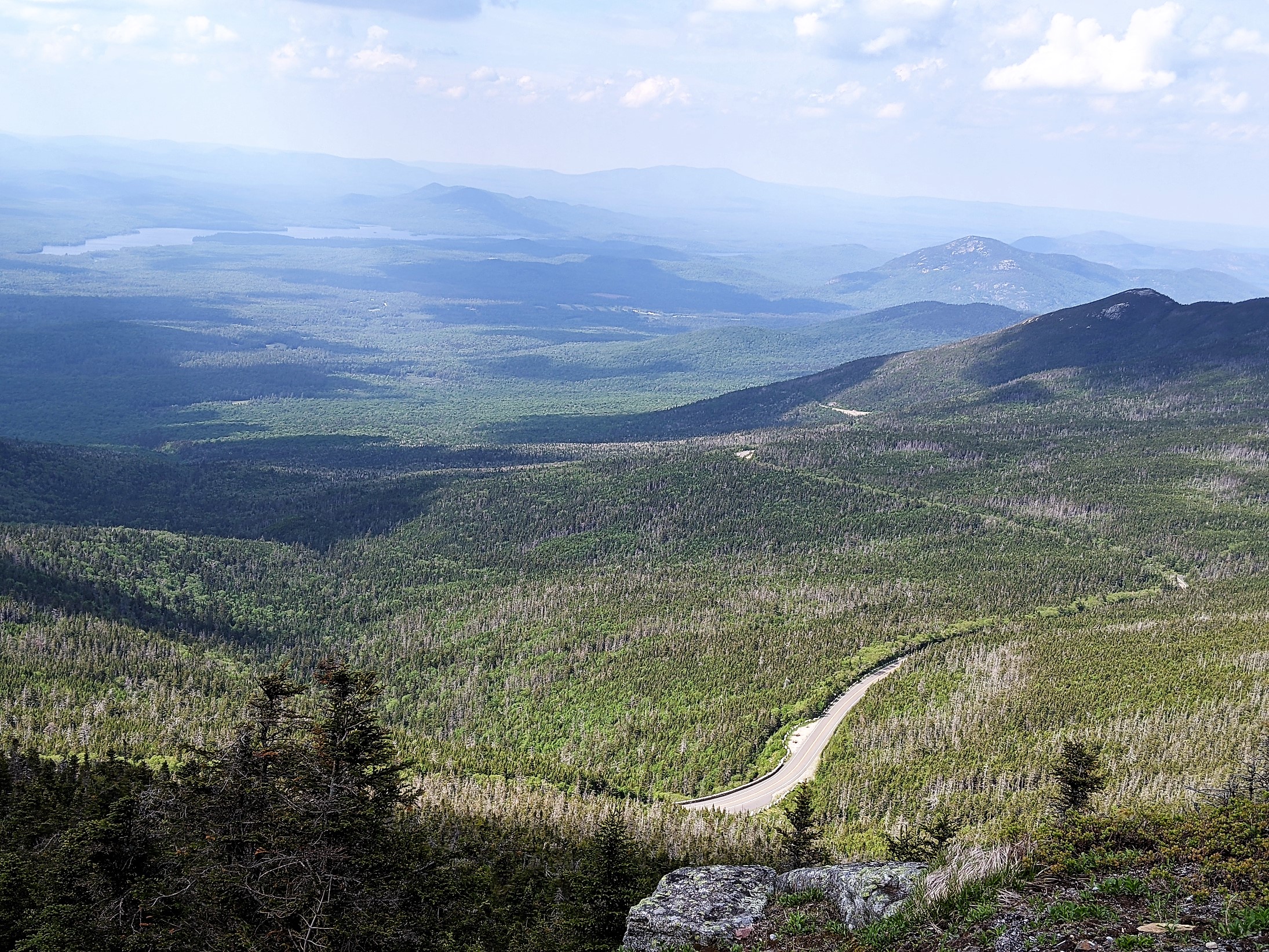
- Whiteface Mountain is a 6-1/2-hour drive, covering 373 miles, from Pottstown. Travels With The Post last visited there on June 7, 2021. It can be reached by car via its Veterans Memorial Highway (above), except for a final foot-walk to the summit.
Re-dedication of the mountain previously was an annual event, until the arrival of COVID 19. It hasn’t happened since, and the authority made plans to ensure the yearly exercise resumed during 2023.
The mountain is again open to visitors
Whiteface Mountain opened this year to visitors on May 19, and its season is scheduled to end Oct. 9. That’s because its winter weather conditions can be brutal, and winter occasionally arrives there earlier than elsewhere. The mountain is 4,867 feet above sea level, and overlooks portions of several states and Canada.

Travelers have plenty to do across the mountain during summer months. Available are gondola rides, nature hikes, disc golf, mountainside yoga classes, an Olympic legacy tour, and the highway cruise. There’s a food truck and souvenir shop waiting for guests near the summit, and it’s a place to snack while enjoying incredible scenery.
Getting there is part of the adventure. Construction of the paved toll highway (above), first surveyed in 1928 and completed in 1937, lasted through the terms of three New York governors, including Franklin D. Roosevelt. Its 5-mile length makes several switchback turns followed by long stretches as the road rises.
At the top, there’s plenty of roadside parking. Be forewarned, though: glances beyond the nearby guard rails and down the sheer slopes have been known to cause panic attacks.
A stone castle at one end of the parking area was built in 1936, and now serves as a welcome center at 4,610 feet above sea level. That’s the starting point for visitors on the last leg of the Whiteface journey, because the typical car can’t take them any farther.
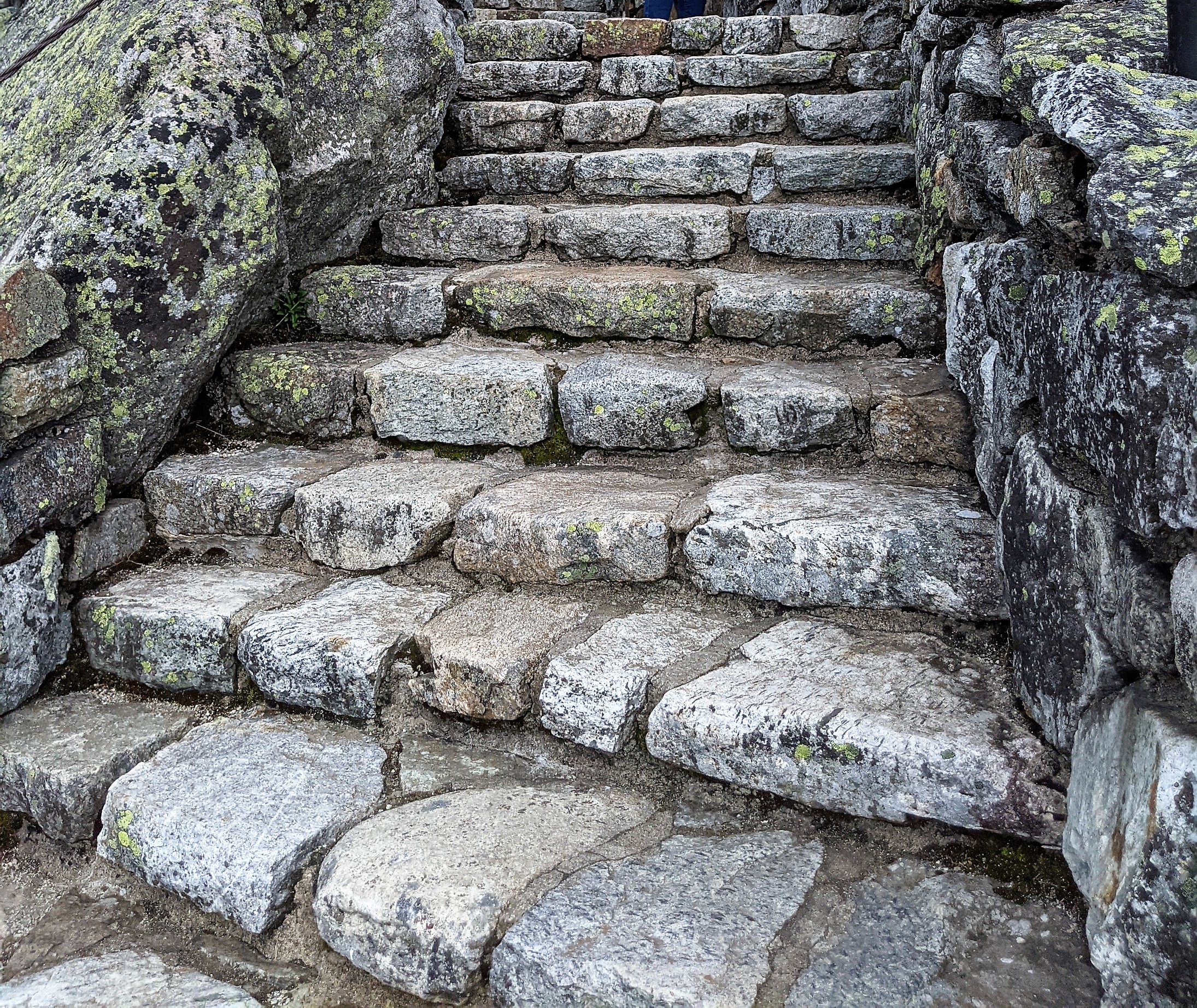
Stairs to the very top
To reach the summit, they must foot-climb a steep stone staircase (at left and below), while gripping a railing made mostly of braided steel cables and weathered pipes. They’ll also occasionally pick their way over a spare boulder or two.
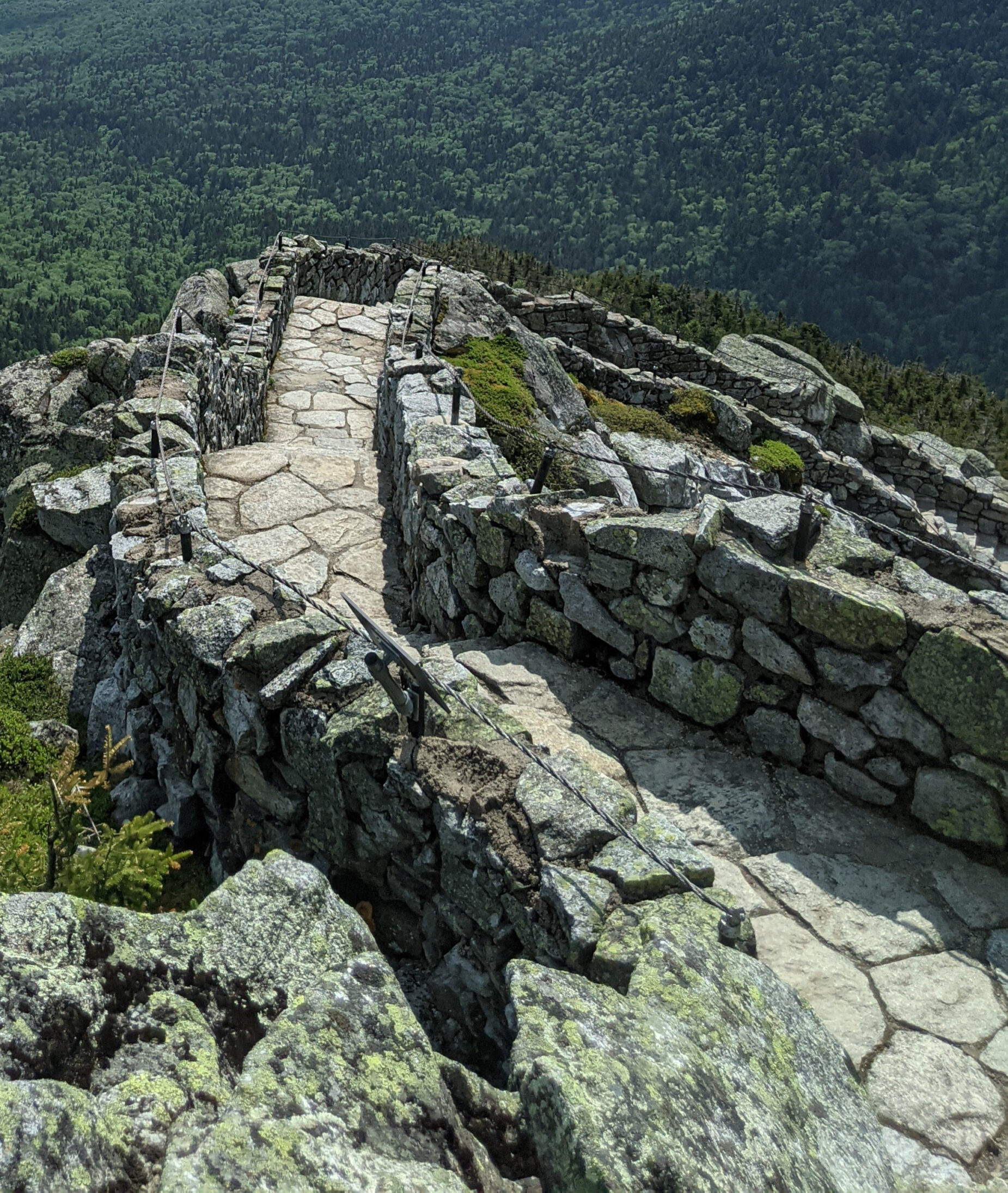
Those who make the trek often go bundled, and tread carefully. Winds can be strong and temperatures much cooler at this height.

The view from the peak (above and at top), however, is spectacular.
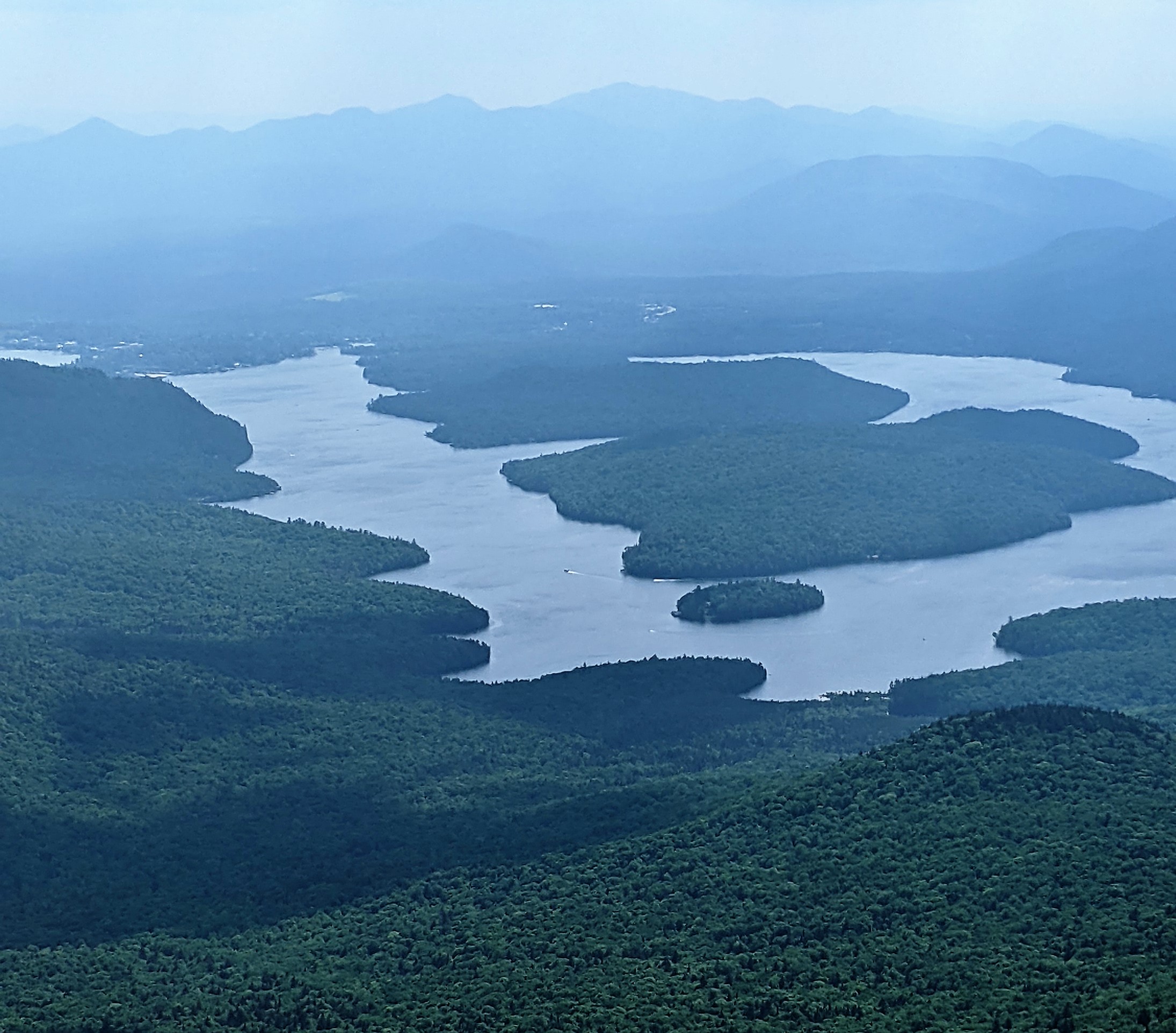
Observers can see Lake Placid and Mirror Lake (above) shimmer and dance in the distance, occasionally dotted by power boats. Both are surrounded by vast acres of hill-covered forests. The trees stretch for miles in almost every direction, like a pointy evergreen carpet that might prick your toes if stepped on.
The alternative: an elevator
There is an alternative to the climb. Visitors may see less going up, but could have an interesting ride, on the mountain’s renovated elevator, according to travel website Wander Wisdom.
Reaching the elevator requires a 400-foot walk deep inside the mountain to its entrance. Once occupied, the elevator will rise 276 feet – the equivalent of 46 different, 6-foot-tall people standing on each others’ shoulders – to the summit. Wander Wisdom reporter Bill De Giulio writes the elevator was the idea of then-Gov. Roosevelt “as a means of helping those less-mobile visitors reach the summit from the parking lot.”
The elevator to the summit was operating Tuesday, but was out of commission during the Travels With The Post 2021 trip.
Prepared for winter, and mountains
The 10th Mountain Division formed and trained in Colorado during the mid-1940s, for winter and mountain warfare operations in Italy during World War II. It has been deactivated and reactivated several times since. During the past two decades from its base in Fort Drum NY, also within the Adirondacks, its soldiers have been put to work globally nearly every year.
They served in Operations Desert Shield and Desert Storm in Iraq, in Operation Uphold Democracy in Haiti, and to monitor peace treaty enforcement in Israel and Egypt. They were sent to the Middle East following the Sept. 11 terrorist attacks in New York, Washington, and Pennsylvania; and spent tours spanning several years in Iraq and Afghanistan.
Division units also helped with relief tasks in Florida following Hurricane Andrew, hunger relief in Somalia, and Hurricane Sandy relief in New York and New Jersey.
U.S. Sen. Robert “Bob” Dole of Kansas, Republican leader of the Senate for more than a decade and a former U.S. presidential candidate who lost the 1996 election to Democrat Bill Clinton, was a former division member. Dole was severely wounded in the Italian campaign.
On the way back down
De Giulio provides good advice for those returning to the memorial highway and driving back down the mountain. Put the vehicle into a lower gear, he writes, for the departing trip. It saves wear and tear on the brakes.
June 7, 2021 photos, all by Travels With The Post
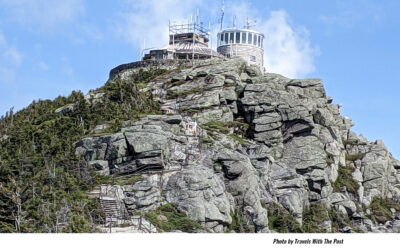
 Chester County Town Tour Series Returns for 29th Year
Chester County Town Tour Series Returns for 29th Year